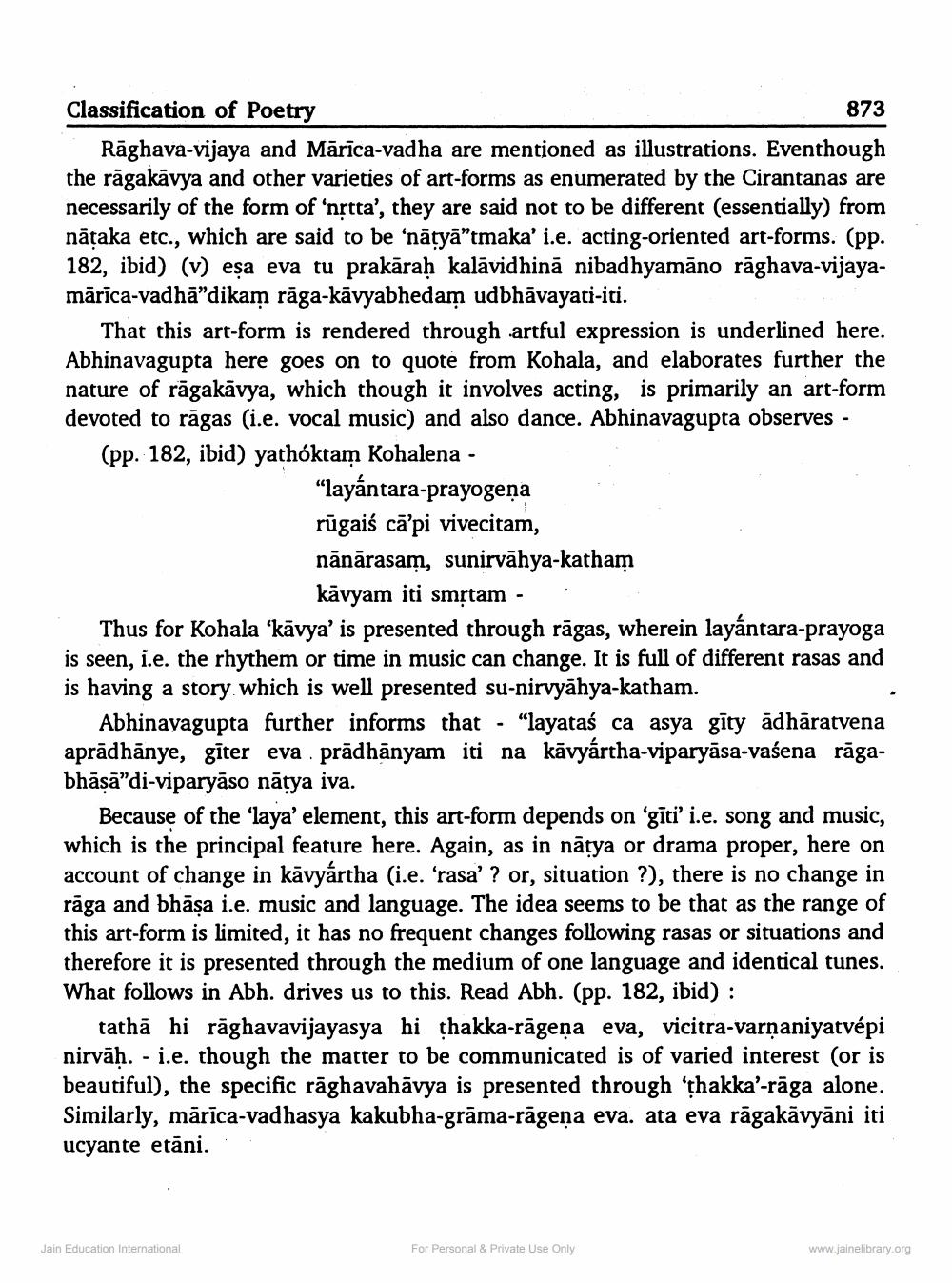________________
Classification of Poetry
873 Rāghava-vijaya and Mārīca-vadha are mentioned as illustrations. Eventhough the rāgakāvya and other varieties of art-forms as enumerated by the Cirantanas are necessarily of the form of 'nţtta', they are said not to be different (essentially) from nāțaka etc., which are said to be 'nātyā”tmaka' i.e. acting-oriented art-forms. (pp.
182, ibid) (v) esa eva tu prakāraḥ kalāvidhinā nibadhyamāno rāghava-vijayamārīca-vadhā"dikam rāga-kāvyabhedam udbhāvayati-iti.
That this art-form is rendered through artful expression is underlined here. Abhinavagupta here goes on to quote from Kohala, and elaborates further the nature of rāgakāvya, which though it involves acting, is primarily an art-form devoted to rāgas (i.e. vocal music) and also dance. Abhinavagupta observes - (pp. 182, ibid) yathoktam Kohalena -
"layántara-prayogena rūgaiś cā’pi vivecitam, nānārasam, sunirvāhya-katham
kāvyam iti smộtam - . Thus for Kohala 'kāvya' is presented through rāgas, wherein layántara-prayoga is seen, i.e. the rhythem or time in music can change. It is full of different rasas and is having a story which is well presented su-nirvyāhya-katham.
Abhinavagupta further informs that - "layataś ca asya gīty adhāratvena aprādhānye, gīter eva . prādhānyam iti na kāvyártha-viparyāsa-vaśena rāgabhāsā”di-viparyāso nātya iva
Because of the 'laya' element, this art-form depends on ‘gīti' i.e. song and music, which is the principal feature here. Again, as in nātya or drama proper, here on account of change in kāvyártha (i.e. 'rasa'? or, situation ?), there is no change in rāga and bhāsa i.e. music and language. The idea seems to be that as the range of this art-form is limited, it has no frequent changes following rasas or situations and therefore it is presented through the medium of one language and identical tunes. What follows in Abh. drives us to this. Read Abh. (pp. 182, ibid) :
tathā hi rāghavavijayasya hi thakka-rāgena eva, vicitra-varnaniyatvépi nirvāh. - i.e. though the matter to be communicated is of varied interest (or is beautiful), the specific rāghavahāvya is presented through 'thakka’-rāga alone. Similarly, mārica-vadhasya kakubha-grāma-rāgena eva. ata eva rāgakāvyāni iti ucyante etāni.
Jain Education International
For Personal & Private Use Only
www.jainelibrary.org




